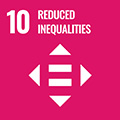- Docente: Francesco Chiaravalloti
- Credits: 6
- SSD: SECS-P/03
- Language: English
- Teaching Mode: Traditional lectures
- Campus: Bologna
- Corso: Second cycle degree programme (LM) in Innovation and Organization of Culture and the Arts (cod. 6114)
-
from Feb 11, 2025 to Feb 27, 2025
Learning outcomes
The objectives of the course are: • To provide an understanding of the influence of economic thinking on public (cultural) policies and on the activities of arts organizations; • To raise awareness about how the role of arts and arts organizations in society depends on the historical, cultural, social, economic and political contexts in which they operate; • To provide an overview of the current debate and research on the values of art for society; • To raise awareness about the current urgency for artists, arts organizations and their managers, and policy makers to make the case for arts and culture; • To provide an overview of tools that helps to capture, elaborate, present, and discuss the values that artists and arts organizations create for society. At the end of the course, students will be able: • To define Cultural Economics according to the two main approaches to this field of study; • To define Cultural Policy in general and to identify influential policies and political actors in specific local, national and international contexts; • To articulate and apply current taxonomies of the values of art to the analysis of current (cultural) policies and of their impact on how arts and cultural organizations try to legitimate their role in society; • To apply state-of-the-art advocacy and accountability frameworks for art and culture to real cases; • To reflect on the (in)adequacy of these frameworks and of the language of numbers in the evaluation of arts and arts organizations and to experiment with alternative forms and “languages” of accountability.
Course contents
Introduction to Cultural Economics
- The importance of economics for cultural policy and management
- The origins of a discipline
- Defining Cultural Economics
Economics and Cultural Policy
- The importance of cultural policy for arts managers
- Defining Cultural Policy
- The politics and the economics of cultural policy
Cultural Policies: One Main Common Topic, Different Visions
- The values of art for society
- The contexts and the rationales of Cultural Policy
- The characteristics of New Public Management
Debating the Values of Art
- Intrinsic and instrumental benefits of the arts
- The current dispute on the values of art
Capturing the Values of Art through Research on Artistic Encounters
- The unaccomplished endeavor of shifting the study of the values of art from the instrumental to the intrinsic benefits
- Definition and types of audience and visitors research
Communicating the Values of Art
- The nature of the information about the values of art
- Instruments to communicate values
Readings/Bibliography
Main:
T.b.a.
Additional:
Crossick, G., Kaszynska, P., 2016. Understanding the value of arts and culture. The AHRC Cultural Value Project. Swindon (Wiltshire): Arts & Humanities Research Council.
All the literature cited in the slides of the lecture and listed on the final slides of each lecture.
Teaching methods
Lectures, group work, (group) presentations, interactive discussions.
Assessment methods
Two components form the final assessment: group work (discussions of the assignments at each session and presentation of the final group portfolios including a consistent and complete summary of the partial group assignments) and an individual exam (written exam with open questions).
Teaching tools
In case the course will be offered in hybrid form, online lectures on Teams will be the main component of the online part of the course. Students are required to connect to the platform using their own laptops. There is no specific hardware requirement.
Office hours
See the website of Francesco Chiaravalloti
SDGs



This teaching activity contributes to the achievement of the Sustainable Development Goals of the UN 2030 Agenda.
